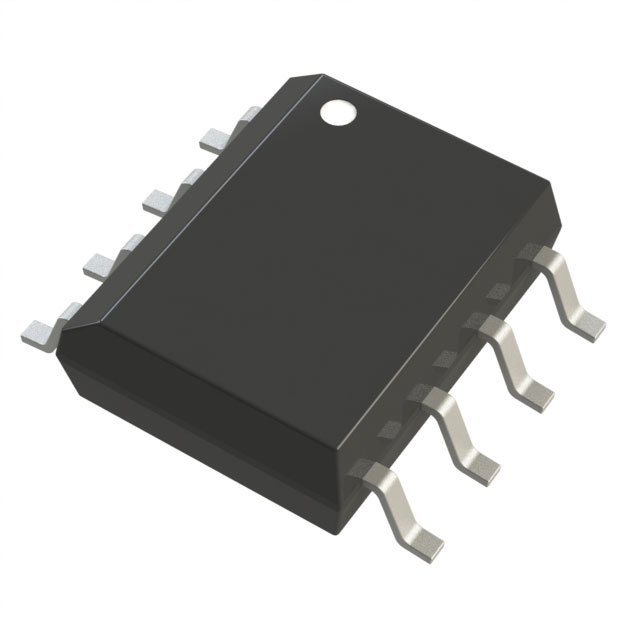- Online chat

EPCS4SI8N
1. General Introduction
The EPCS4SI8N is a configuration device often associated with Altera (now Intel) FPGAs (Field - Programmable Gate Arrays). Configuration devices play a crucial role in the operation of FPGAs as they store the configuration data that determines the FPGA's functionality after power - up.
2. Key Features
2.1 Non - Volatile Memory
The EPCS4SI8N uses non - volatile memory technology. This means that the configuration data stored in it is retained even when the power is removed. When the connected FPGA powers up, it can retrieve the pre - stored configuration from the EPCS4SI8N, ensuring that the FPGA starts up with the correct functionality. This is essential for applications where reliable and consistent operation is required, such as in industrial control systems and telecommunications equipment.
2.2 Adequate Storage Capacity
It has a storage capacity suitable for storing the configuration data of moderately complex FPGAs. For example, the “4” in the part number might indicate a storage capacity of 4 Mbits (this is a common naming convention). This amount of storage allows for the implementation of relatively large - scale logic designs within the FPGA.
2.3 Serial Configuration Interface
The device is equipped with a serial configuration interface. A serial interface simplifies the connection between the EPCS4SI8N and the FPGA, reducing the number of interconnecting wires on the printed circuit board (PCB). This results in a more compact and cost - effective design, especially in applications with limited board space. Additionally, serial interfaces are often easier to implement and troubleshoot compared to parallel interfaces.
2.4 Fast Configuration Speed
The EPCS4SI8N is designed to provide fast configuration times for FPGAs. A quick configuration process is essential in applications where rapid system startup or re - configuration is required. For instance, in real - time signal processing systems or communication equipment that needs to adapt to different operating modes quickly, fast configuration can significantly improve the system's performance.
2.5 Low Power Consumption
It features low power consumption characteristics. Low power consumption is beneficial for battery - powered devices or applications where energy efficiency is a priority. Reduced power consumption not only extends the battery life but also helps in minimizing heat generation, which can improve the overall reliability of the system.
3. Applications
3.1 Telecommunications
In the telecommunications industry, FPGAs are widely used for tasks such as signal processing, protocol conversion, and network routing. The EPCS4SI8N is used to store the configuration data for these FPGAs, ensuring that they can operate correctly in various communication systems, including routers, switches, and base stations. The fast configuration speed and low power consumption make it suitable for high - performance and energy - efficient telecommunications applications.
3.2 Industrial Automation
Industrial automation systems rely on FPGAs for functions such as motor control, sensor data acquisition, and process monitoring. The EPCS4SI8N provides a reliable way to store and load the FPGA configurations, enabling the automation systems to function accurately and stably in different industrial environments. The non - volatile memory ensures that the system can resume normal operation after a power outage without the need for manual re - configuration.
3.3 Automotive Electronics
In automotive applications, FPGAs are used in advanced driver - assistance systems (ADAS), in - vehicle infotainment systems, and engine control units. The EPCS4SI8N can be used to configure these FPGAs, providing the necessary functionality for tasks such as image processing, sensor fusion, and communication interfaces. The low power consumption and fast configuration speed are important considerations in automotive electronics, where power efficiency and quick system startup are crucial.
4. Electrical Specifications
4.1 Supply Voltage Range
The EPCS4SI8N operates within a specific supply voltage range. For example, it may be designed to work with a supply voltage between 2.7V and 3.6V. This voltage range allows for compatibility with a variety of power sources commonly used in electronic systems.
4.2 Clock Frequency
The device has a specified clock frequency for its serial interface. The clock frequency determines the speed at which data can be transferred between the EPCS4SI8N and the FPGA during the configuration process. A higher clock frequency generally results in faster configuration times.
4.3 Data Retention Time
The data retention time indicates how long the configuration data stored in the non - volatile memory can be retained without significant degradation. The EPCS4SI8N has a relatively long data retention time, ensuring the long - term reliability of the stored configuration data.
In conclusion, the EPCS4SI8N is a reliable and efficient configuration device that offers important features for FPGA - based systems, enabling a wide range of applications in different industries.




